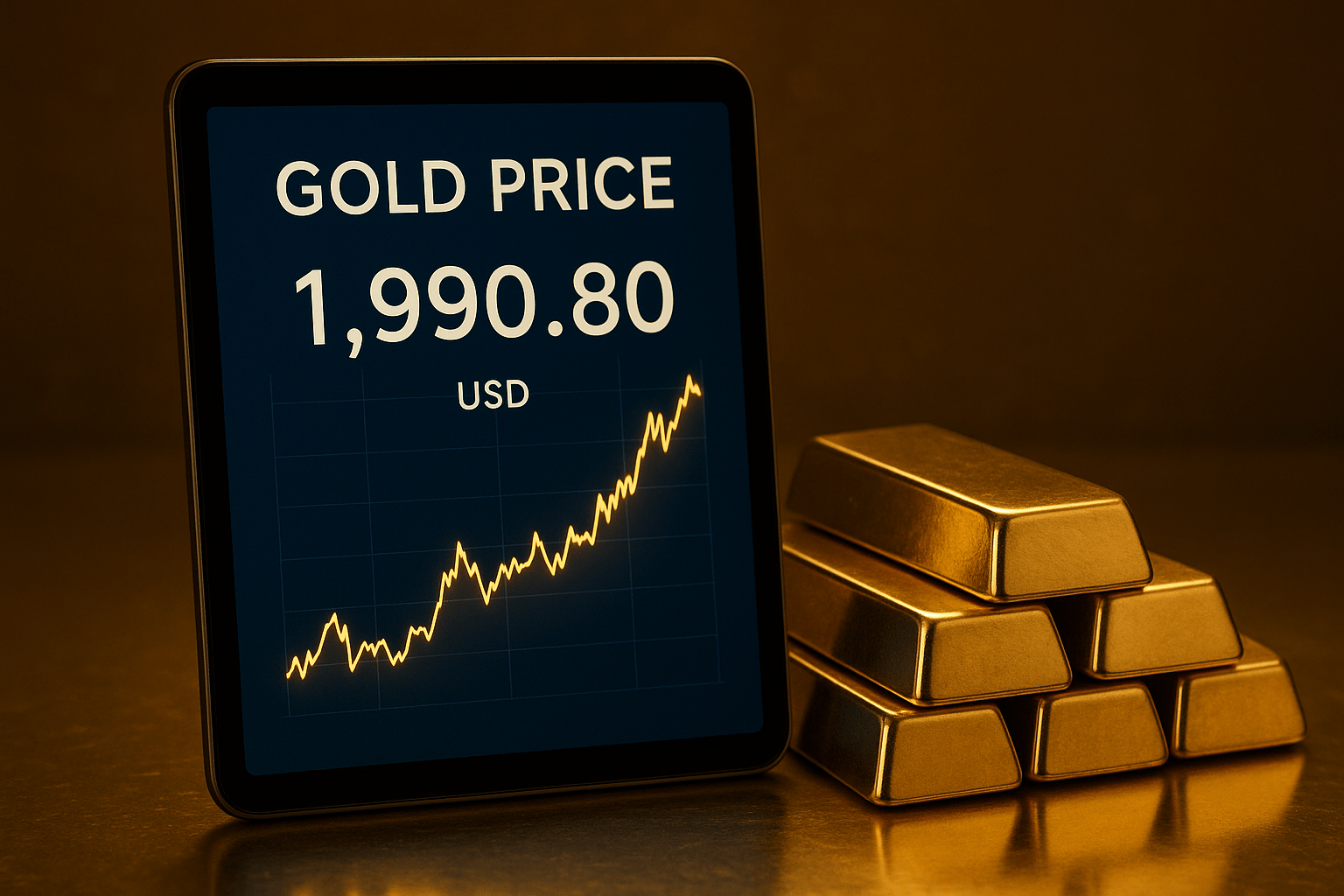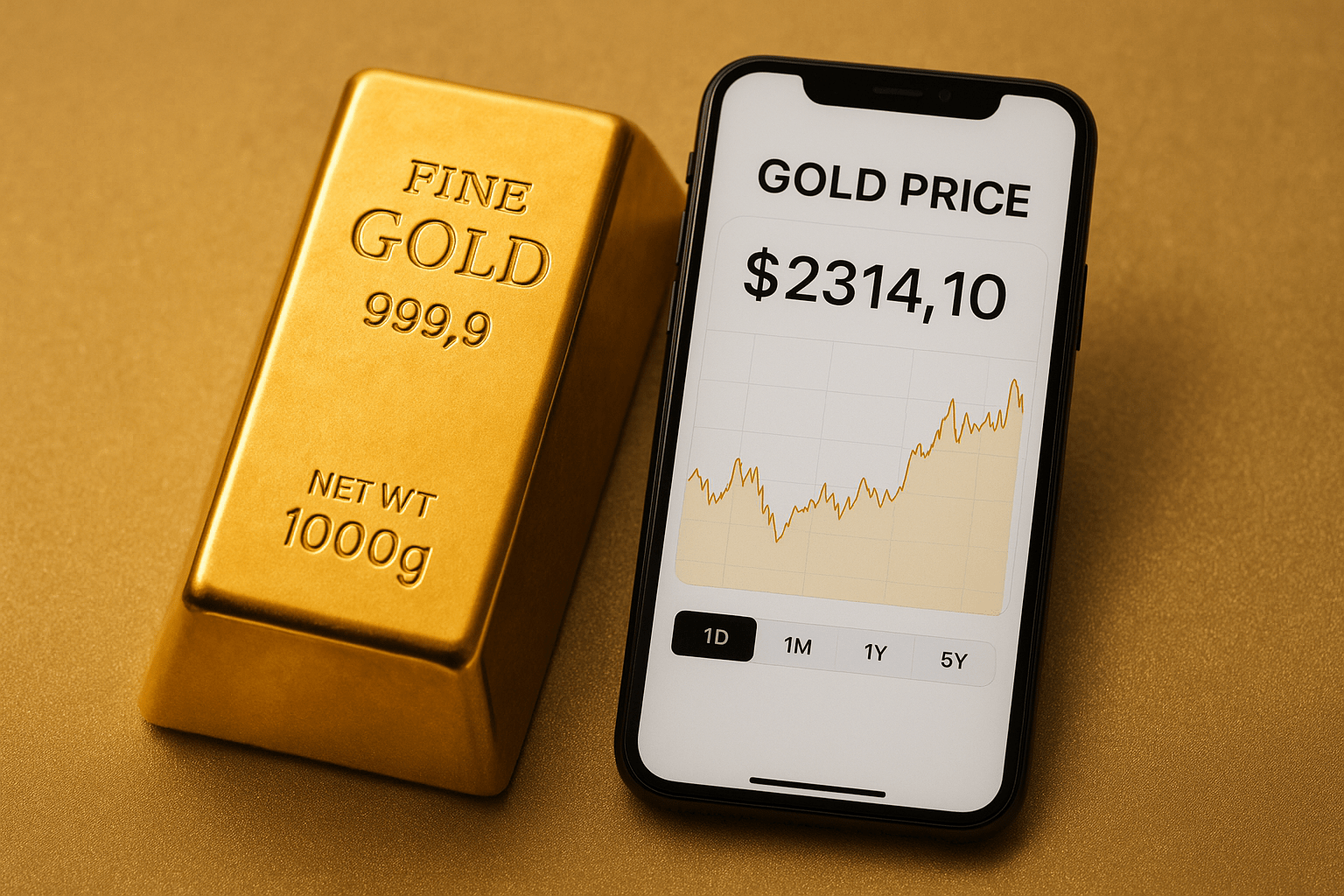In the glittering world of precious metals, knowledge is more (gold price tool) valuable than the metal itself. Whether you’re a seasoned investor, someone buying jewelry for a wedding, or simply curious about the state of the economy, one question is universal: “What is the price of gold right now?” The answer lies in a modern marvel of financial technology: the gold price tool. This powerful digital instrument has revolutionized how we access and understand the value of this ancient asset, making it easier than ever to find the current market rate.
But what exactly is a gold price tool, how does it work, and how can you use it to your advantage? This comprehensive guide will demystify these tools, turning you from a curious observer into an informed participant in the gold market.
Why is the Price of Gold So Dynamic?
Before we dive into the tools, it’s crucial to understand why you even need one. Unlike the price of a loaf of bread, gold’s value fluctuates constantly throughout the day. This is because gold is traded on global markets 24 hours a day, moving from exchanges in London to New York to Hong Kong.
The price is primarily driven by:
-
Supply and Demand: Basic economics. Limited new mining supply versus demand from investors, central banks, and industries (like electronics and dentistry).
-
The U.S. Dollar: Gold is priced in USD. A weaker dollar makes gold cheaper for holders of other currencies, boosting demand and driving the price up. Conversely, a strong dollar often pushes gold prices down.
-
Geopolitical Uncertainty: Gold is a classic “safe-haven” asset. During times of political instability, war, or economic crisis, investors flock to gold, driving its price higher.
-
Inflation and Interest Rates: Gold is often seen as a hedge against inflation. When the cost of living rises, the value of gold typically follows. Interest rates also play a role; lower rates make non-yielding assets like gold more attractive.
With so many factors at play, the price can change by the minute. Guessing or using last week’s price is a recipe for a bad financial decision. This is where a reliable gold price tool becomes indispensable.
What is a Gold Price Tool, Exactly?
A gold price tool is a digital platform—often a website, widget, or mobile app—that provides real-time or near-real-time pricing information for gold. It aggregates data from major global exchanges and presents it in a clear, easy-to-understand format.
Think of it as the financial news ticker specifically for the gold market. The best tools do more than just show a single number; they provide context through charts, historical data, and currency converters.
Key Features of a High-Quality Gold Price Tool:
-
Live, Real-Time Pricing: The core function. The price should update frequently (every minute or even seconds) to reflect the live market “spot price.”
-
Interactive Charts: Allows you to view the price movement over different timeframes—be it 24 hours, a week, a month, a year, or five years. This helps identify trends.
-
Multiple Weight Units: A good tool doesn’t just show the price per ounce (the standard unit). It should also calculate the value for grams, kilograms, and Tolas (a common unit in South Asia), as you can see in the example tool below.
-
Currency Conversion: Instantly see the gold price in your local currency, whether it’s Euros, British Pounds, Indian Rupees, or Japanese Yen.
-
Historical Data: The ability to check what the price was on a specific date in the past. This is crucial for calculating capital gains taxes or understanding your investment growth.
[Image: A screenshot of a live gold price tool widget on a website, showing the current price in USD, EUR, and GBP, with a chart and weight unit converter.]
Alt Text: A live gold price tool showing current market rates and a chart.

How to Use a Gold Price Tool: A Practical Example
Let’s say you’re in Berlin and inherited a 100-gram gold bar. You’re considering selling it to help fund a new car.
-
Find a Reputable Tool: You open a trusted financial website like Bloomberg, Kitco, or BullionVault that features a live gold price tool.
-
Check the Spot Price: You see the live “spot price” is $1,950 per troy ounce. But you need the price per gram in Euros.
-
Convert the Units: You use the tool’s unit converter. Since there are approximately 31.1035 grams in a troy ounce, the tool calculates the price per gram:
$1,950 / 31.1035 ≈ $62.70 per gram. -
Convert the Currency: The tool has a currency dropdown. You select EUR. With an exchange rate of 1 USD = 0.92 EUR, the tool shows the price is €57.68 per gram.
-
Calculate Your Gold’s Value: For your 100-gram bar:
100 grams * €57.68/gram = €5,768.
This entire process takes seconds. Without this tool, you’d be manually checking exchange rates, doing complex calculations, and likely working with outdated information.
Top Gold Price Tools to Consider
While many platforms offer this service, some are industry standards for their reliability and feature set:
-
Kitco: A giant in the precious metals news space. Their website features a comprehensive and highly detailed gold and silver price chart that is updated in real-time.
-
BullionVault: Offers an excellent live charting system and a user-friendly interface for both tracking prices and actually buying/selling physical gold.
-
GoldPrice.org: A straightforward, no-frills website that does one thing and does it well: showing the live gold price in every major global currency.
-
Financial Portals (Bloomberg, Reuters): These are the sources that many other tools pull data from. Their terminals are the professional’s choice, but their public websites also provide accurate, real-time data.
-
Mobile Apps: Most of the above offer mobile apps, putting a powerful gold price tool directly in your pocket. You can set up price alerts to notify you when gold crosses a certain threshold.
A Word of Caution: Understanding the “Ask,” “Bid,” and “Spread”
When you use a gold price tool, the price you see is almost always the wholesale “spot price.” This is the benchmark price for large amounts of gold traded between institutions.
When you go to buy a coin or a bar from a dealer, you will pay a premium above the spot price (the “ask” price). This covers the dealer’s costs for fabrication, distribution, and a small profit margin.
When you sell, the dealer will buy it from you below the spot price (the “bid” price). The difference between the buy and sell price is called the “spread.”
A good gold price tool helps you understand the true underlying value of gold, so you can ensure you’re getting a fair deal from a retailer and not overpaying on the premium.
Conclusion: Empowering Your Financial Decisions
Gone are the days of needing a stockbroker on speed dial or waiting for the morning newspaper to check commodity prices. The democratization of financial information through tools like a gold price tool has empowered individuals to take control of their investments.
By providing instant, transparent, and accurate data, these tools level the playing field. Whether you’re making a significant investment, selling a family heirloom, or just satisfying your curiosity, using a reliable gold price tool is the first and most critical step. It ensures that you enter every gold-related transaction informed, confident, and ready to capitalize on the timeless value of gold.

Frequently Asked Questions (FAQs)
Q1: Is the price shown on a gold price tool the price I will pay at a jewelry store?
A: Not exactly. The price on the tool is the “spot price” of raw, bulk gold. Jewelry has additional costs like craftsmanship, design, brand markup, and gemstones, so it will always be sold at a significant premium above the spot price.
Q2: How often is the price updated in these tools?
A: High-quality tools update their prices every 60 seconds or even more frequently (e.g., every 10-30 seconds) to closely mirror the live trading on global commodities exchanges.
Q3: Are free gold price tools accurate?
A: Reputable free tools from established names like Kitco, Bloomberg, or Reuters are highly accurate as they source their data directly from the major global exchanges. Be cautious of tools on obscure websites that may have a motive to display slightly skewed data.
Q4: Can I use these tools to track other precious metals?
A: Absolutely! Most gold price tools are actually part of a suite of precious metals tools. You can almost always toggle between live prices for silver, platinum, and palladium.
Q5: Why are there different prices for gold on different websites?
A: While prices should be very similar, tiny discrepancies can occur due to slight delays in data feeds or different averaging methods. However, the difference should be minuscule (a few cents). If you see a large difference, one of the sources is likely unreliable.
Disclaimer: This article is for educational and informational purposes only and should not be construed as financial, investment, or legal advice. The gold market is volatile, and you should always conduct your own research and consult with a qualified financial advisor before making any investment decisions. While we strive to provide accurate and up-to-date information, we make no representations or warranties of any kind regarding the completeness or accuracy of the content herein. If you have any concerns regarding this content, please visit our DMCA page to view our guide related to the removal of content. Please contact us with verification for any ownership claims or issues related to this post.
